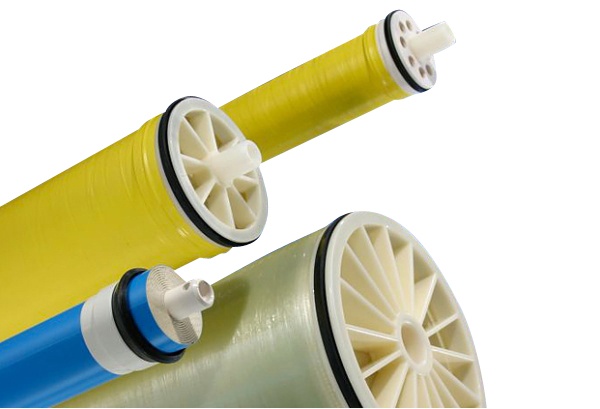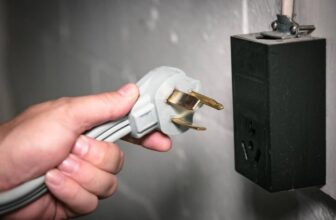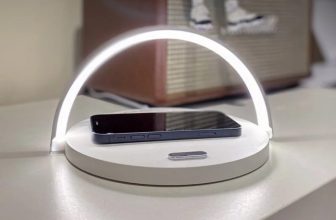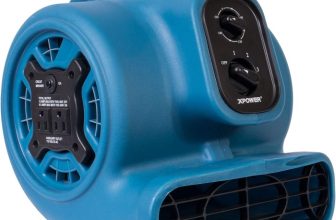
Reverse Osmosis (RO) is a widely used water purification technology that ensures the production of clean, safe, and high-quality drinking water. At the heart of this process lies the Reverse Osmosis Membrane Elements. In this article, we will delve into the various aspects of RO membrane elements, exploring their types, functions, construction, and the materials used in their synthesis. By the end of this guide, you will have a clear understanding of how RO membrane elements work and their critical role in water filtration.
RO Membrane Types and Functions:
Types of RO Membrane Elements
RO membrane elements come in various types, each designed for specific applications and water quality conditions. Some common types include:
- Cellulose Acetate (CA) Membrane: Suitable for low-salinity applications.
- Thin-Film Composite (TFC) Membrane: Ideal for high-salinity water and seawater desalination.
- Polyamide (PA) Membrane: Offers excellent rejection of dissolved solids and is widely used in residential and industrial settings.
- Nanofiltration (NF) Membrane: Allows selective filtration of specific ions, useful in softening hard water.
Functions of RO Membrane Elements
RO membrane elements play a pivotal role in the reverse osmosis process. Their primary functions include:
- Selective Filtration: RO membranes have microscopic pores that permit water molecules to pass through while blocking contaminants, ions, and other impurities.
- Salt Rejection: RO membranes effectively remove dissolved salts, minerals, and heavy metals, producing high-purity water.
- Desalination: RO membranes are essential in desalination processes, converting seawater into fresh, potable water.
- Water Purification: They remove harmful pollutants, bacteria, viruses, and organic compounds, ensuring safe drinking water.
- Concentration of Waste: RO membranes concentrate rejected contaminants, minimizing water wastage.
- Preventing Scaling: They prevent mineral scaling on the membrane surface, increasing its lifespan and efficiency.
Reverse Osmosis Membranes Construction:
Membrane Structure and Composition
RO membranes are intricately constructed, featuring a thin, semi-permeable barrier that allows water molecules to pass through while rejecting impurities. The construction consists of three main layers:
- Thin-Film Polyamide Layer: This is the active layer of the membrane responsible for the selective filtration of water molecules. It allows only water to pass through while blocking larger ions and particles.
- Interfacial Polymerization Layer: This layer promotes the formation of the active layer and enhances membrane performance.
- Supportive Layer: The bottom layer provides mechanical strength to the membrane, preventing damage during the filtration process.
Which Material is Used for RO Membrane Synthesis?
Polyamide: The Material of Choice
The thin-film polyamide layer, which is the heart of the RO membrane, is primarily synthesized using aromatic polyamide. This material exhibits exceptional properties for water purification, such as high rejection of dissolved solids and organic compounds. The synthesis of polyamide membranes involves interfacial polymerization, a process that creates a thin, dense, and highly selective barrier.
Aromatic polyamide ensures the membrane’s durability, allowing it to withstand the harsh conditions of water treatment processes, including variations in temperature and pressure. The use of polyamide in RO membranes has revolutionized the water purification industry, making RO technology one of the most reliable and widely adopted methods for clean water production.
What are the Three Layers of RO Membrane?
Delving Deeper into RO Membrane Structure
To better understand how RO membranes function, let’s explore the three distinct layers in more detail:
Thin-Film Polyamide Layer:
- Composed of an aromatic polyamide barrier, this layer serves as the primary filtration component.
- Its ultra-thin structure allows water molecules to pass through, while dissolved solids and contaminants are rejected.
- The selective filtration process ensures that only purified water reaches the other side of the membrane.
Interfacial Polymerization Layer:
- Positioned between the thin-film polyamide layer and the supportive layer, this part facilitates the creation of the active barrier.
- During interfacial polymerization, a chemical reaction occurs, forming the thin polyamide film on the supportive layer.
Supportive Layer:
- The bottom layer of the RO membrane, designed to provide mechanical support and stability to the thin-film polyamide layer.
- It prevents the active layer from being damaged during the filtration process, increasing the membrane’s longevity.
FAQs about RO Membrane Elements:
Q: How long do RO membrane elements last?
A: The lifespan of RO membrane elements depends on various factors, including water quality, operating conditions, and maintenance. With proper care and regular replacement, RO membranes can last anywhere from two to five years.
Q: Can I clean and reuse RO membrane elements?
A: RO membrane elements are not meant to be cleaned and reused. Cleaning can damage the delicate membrane surface, affecting its performance. It’s best to replace old or fouled membranes with new ones to ensure efficient water purification.
Q: Are there any environmental benefits to using RO membrane elements?
A: Yes, RO membrane elements contribute to environmental conservation by reducing water wastage. The rejection of contaminants concentrates impurities, resulting in less water discharge compared to traditional filtration methods.
Q: Can RO membrane elements remove fluoride from water?
A: Yes, RO membrane elements are effective in removing fluoride along with other contaminants, providing safe and fluoride-free drinking water.
Q: How much pressure is required for RO membrane filtration?
A: The pressure required for RO membrane filtration varies depending on the specific membrane model and water quality. Typically, pressures range from 40 to 80 psi (pounds per square inch).
Q: Are RO membrane elements suitable for both residential and industrial applications?
A: Yes, RO membrane elements are versatile and find applications in both residential and industrial settings. They can produce small volumes of clean water for households or large quantities for industrial processes.
Conclusion:
RO membrane elements are at the core of reverse osmosis technology, enabling the production of clean and safe drinking water. Understanding their types, functions, construction, and materials is crucial for anyone interested in water purification. As we continue to seek sustainable and efficient water treatment solutions, RO membrane elements will undoubtedly play a pivotal role in ensuring a healthier and safer future.




